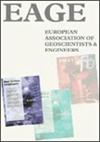Realistic simulation of GPR for landmine and IED detection including antenna models, soil dispersion and heterogeneity
IF 1.6
4区 地球科学
Q3 GEOCHEMISTRY & GEOPHYSICS
引用次数: 0
Abstract
Abstract Ground‐penetrating radar (GPR) is an effective tool for detecting landmines and improvised explosive devices (IEDs), and its performance is strongly influenced by subsurface properties as well as the characteristics of the target. To complement or replace labour‐intensive experiments on test sites, cost‐efficient electromagnetic wave propagation simulations using the Finite‐Difference Time‐Domain (FDTD) method are being increasingly used. However, to obtain realistic synthetic data, accurate modelling of signal alteration caused by dispersion, scattering of soil material, target contrast, shape, and inner setup, as well as the coupling effects of the antenna to the ground is required. In this study, we present a detailed 3D model of a shielded GPR antenna applied to various scenarios containing metallic and non‐metallic targets buried in different soils. The frequency‐dependent intrinsic material properties of soil samples were measured with the coaxial transmission‐line technique, while a discrete random media was used to implement the heterogeneity of a gravel based on its grain‐size distribution. Our simulations show very good agreement with experimental validation data collected under controlled conditions. We accurately reproduce the amplitude and frequency content, phase of target signals, subsurface's background noise, antenna crosstalk and its interference with target signals, and the effect of antenna elevation. The approach allows for systematic investigation of the effects of soil, target, and sensor properties on detection performance, providing insight into novel and complex GPR scenarios and the potential for a wide range of simulation possibilities for demining with GPR. These investigations have the potential to improve the safety and effectiveness of landmine and IED detection in the future, such as building a database for training deminers or developing automatic signal pattern recognition algorithms. This article is protected by copyright. All rights reserved地雷和简易爆炸装置探地雷达探测的真实模拟,包括天线模型、土壤色散和非均质性
摘要探地雷达(GPR)是探测地雷和简易爆炸装置(ied)的有效工具,其性能受目标的地下特性和特性的强烈影响。为了补充或取代测试场所的劳动密集型实验,使用时域有限差分(FDTD)方法进行经济高效的电磁波传播模拟正越来越多地被使用。然而,为了获得真实的合成数据,需要对色散、土壤材料散射、目标对比度、形状、内部设置以及天线与地面的耦合效应等因素引起的信号变化进行精确建模。在这项研究中,我们提出了一个详细的三维模型的屏蔽GPR天线适用于各种场景包含金属和非金属目标埋在不同的土壤。采用同轴传输线技术测量了土壤样品的频率相关特性,而采用离散随机介质来实现基于粒度分布的砾石的非均质性。我们的模拟结果与在受控条件下收集的实验验证数据吻合得很好。准确再现了目标信号的幅频含量、相位、地下背景噪声、天线串扰及其对目标信号的干扰以及天线高程的影响。该方法允许系统地研究土壤、目标和传感器特性对探测性能的影响,为新型和复杂的探地雷达场景提供见解,并为用探地雷达排雷提供广泛的模拟可能性。这些调查有可能在将来提高地雷和简易爆炸装置探测的安全性和有效性,例如建立培训排雷人员的数据库或开发自动信号模式识别算法。这篇文章受版权保护。版权所有
本文章由计算机程序翻译,如有差异,请以英文原文为准。
求助全文
约1分钟内获得全文
求助全文
来源期刊

Near Surface Geophysics
地学-地球化学与地球物理
CiteScore
3.60
自引率
12.50%
发文量
42
审稿时长
6-12 weeks
期刊介绍:
Near Surface Geophysics is an international journal for the publication of research and development in geophysics applied to near surface. It places emphasis on geological, hydrogeological, geotechnical, environmental, engineering, mining, archaeological, agricultural and other applications of geophysics as well as physical soil and rock properties. Geophysical and geoscientific case histories with innovative use of geophysical techniques are welcome, which may include improvements on instrumentation, measurements, data acquisition and processing, modelling, inversion, interpretation, project management and multidisciplinary use. The papers should also be understandable to those who use geophysical data but are not necessarily geophysicists.
 求助内容:
求助内容: 应助结果提醒方式:
应助结果提醒方式:


